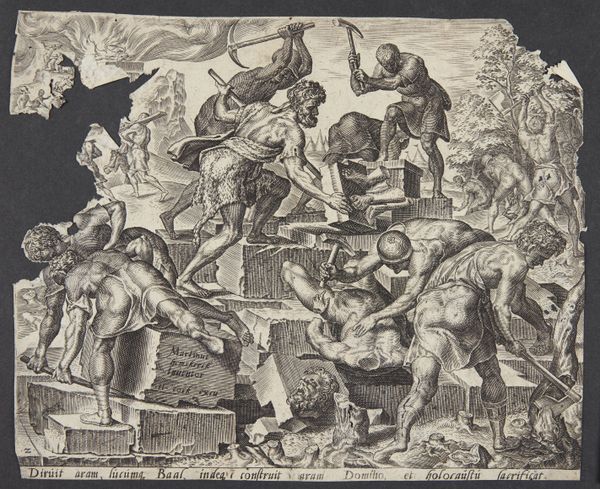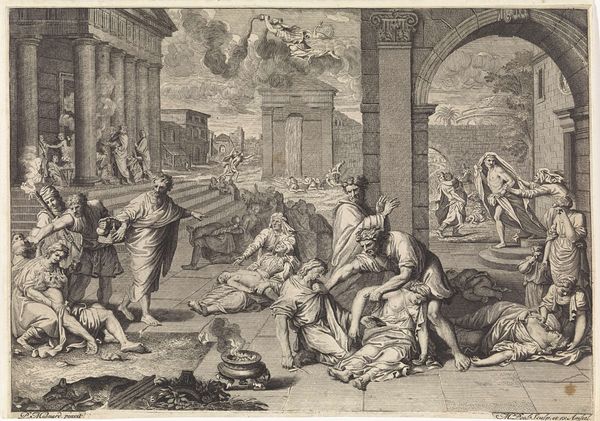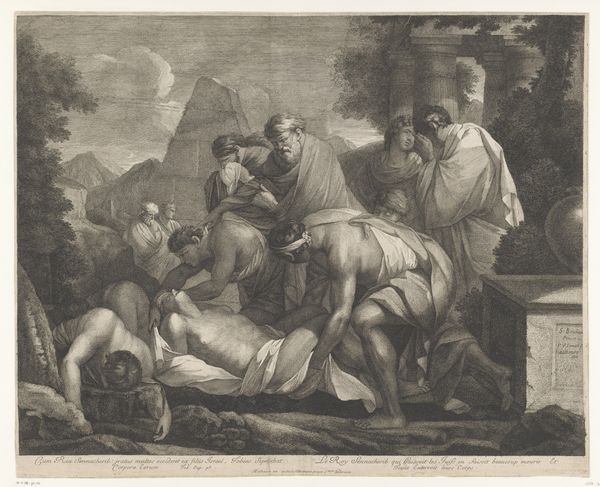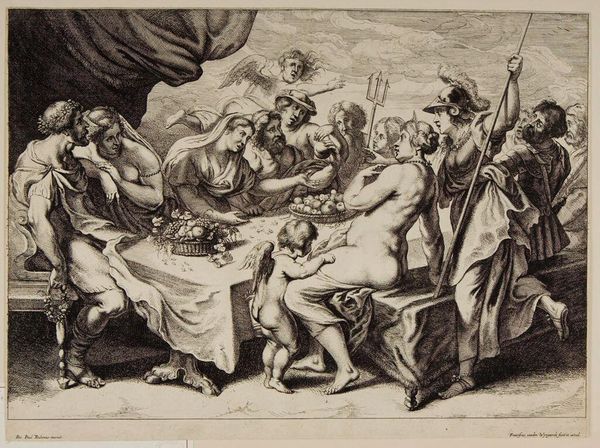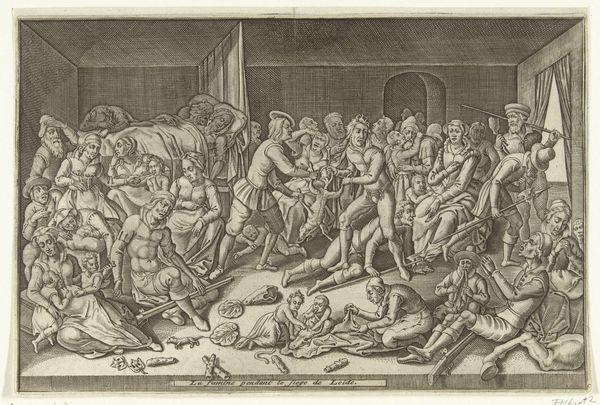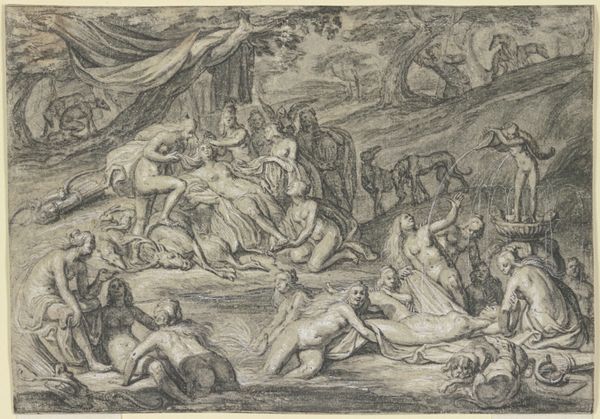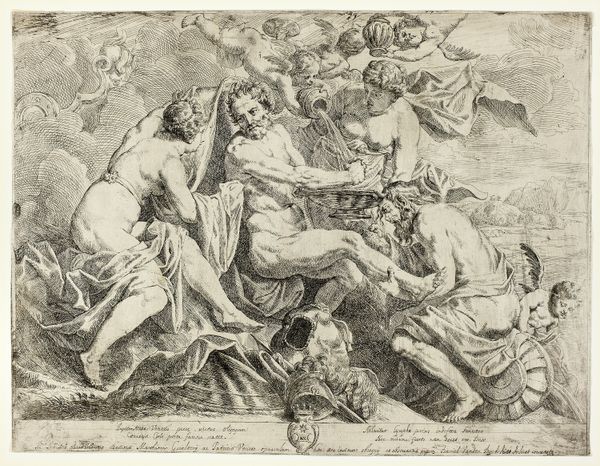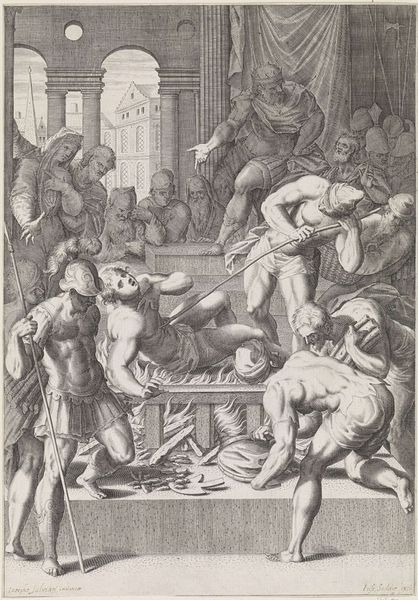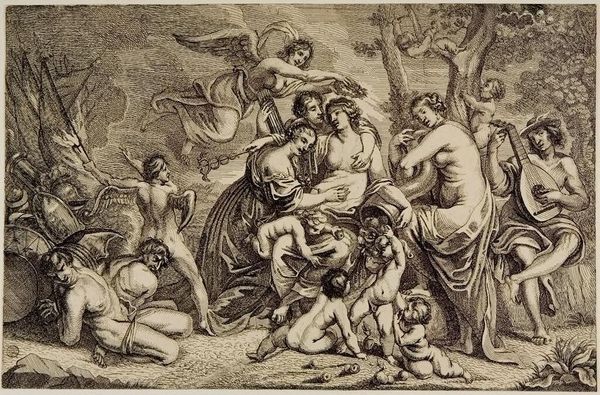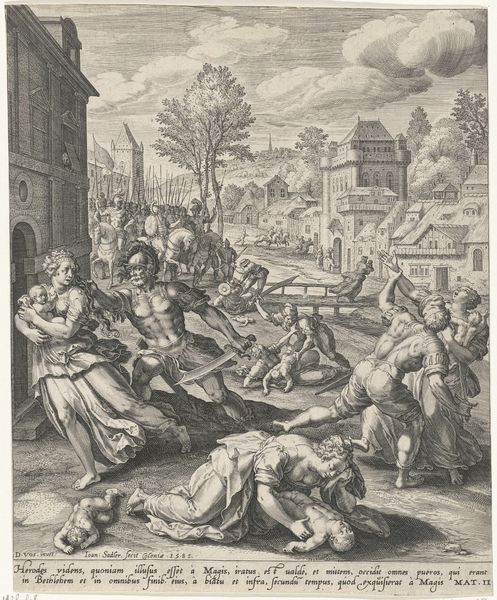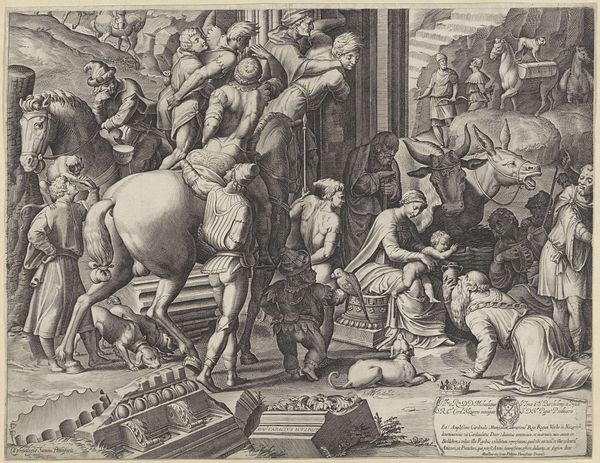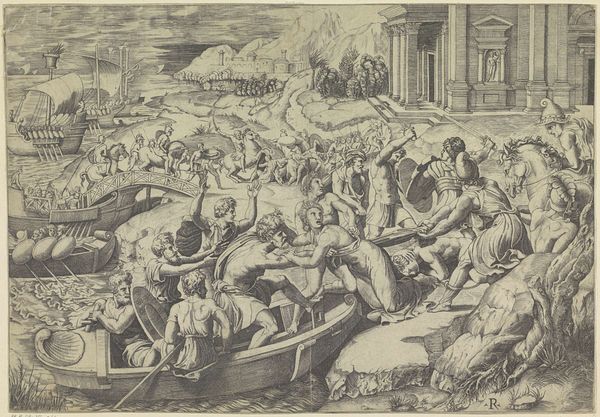
oil-paint
#
allegory
#
oil-paint
#
mannerism
#
figuration
#
oil painting
#
history-painting
Dimensions: height 245 cm, width 358 cm, height 269 cm, width 388 cm, thickness 12 cm
Copyright: Rijks Museum: Open Domain
Curator: Here we have Cornelis Cornelisz van Haarlem’s oil on canvas, "The Massacre of the Innocents," created around 1590. It’s a strikingly violent scene rendered in the Mannerist style. Editor: Striking indeed. My initial reaction is one of almost repulsion, yet also, undeniably, fascination. The figures contort in extreme poses, almost acrobatic in their struggle and suffering. Curator: Absolutely, the contorted bodies and exaggerated musculature are hallmarks of Mannerism, contributing to the dramatic, almost theatrical, presentation of the biblical narrative. Do you see any symbols that speak to you? Editor: The sword raised, glinting against the stormy sky, carries with it a sense of inevitability. Then, too, look at the clothing—scattered like remnants of broken lives, hinting at the vulnerability inherent in societal disruption and state-sponsored violence. Curator: I noticed as well that several soldiers look out at the viewer, acknowledging perhaps that this type of barbaric behavior cannot be consigned to ancient history. But this specific rendition certainly draws on artistic memory. The composition echoes the work of classical artists such as Raphael and Michelangelo, whose emphasis was to make things seem lifelike and vivid. Editor: I agree. Looking closer, the artist captures such an embodied horror: mothers clawing and pleading. How the painting lays bare masculine power unleashed on feminine bodies really makes one think about intersectional dynamics of class and religious persecutions even now. Curator: True, there’s definitely a dialogue between aesthetics and moral outrage here. Perhaps Cornelisz is implying something similar when incorporating allegory as a mode, pointing toward cycles of persecution and violence embedded deep within civilization. Editor: That’s a powerful idea, the painting working as both historical record and a cautionary tale resonating across centuries. So, it reminds us of the danger inherent in systems of oppression, challenging viewers to confront the historical realities and present day implications of systemic violence and control. Curator: A truly devastating piece of work. It invites contemplation and, as you pointed out, important dialogue about the role of such narratives in the human psyche. Editor: Indeed. It holds up a mirror not just to the past but, unnervingly, to the enduring potential for brutality within the present.
Comments
rijksmuseum almost 2 years ago
⋮
When Herod, the King of Judea, learned that a child destined to become ‘King of the Jews’ would be born in Bethlehem, he ordered the slaughter of all boys under the age of two. The painter portrayed the massacre as a gruesome nightmare. Horror follows upon horror: at lower left a soldier slits a child’s throat, while above them a woman gouges out a soldier’s eyes.
Join the conversation
Join millions of artists and users on Artera today and experience the ultimate creative platform.

